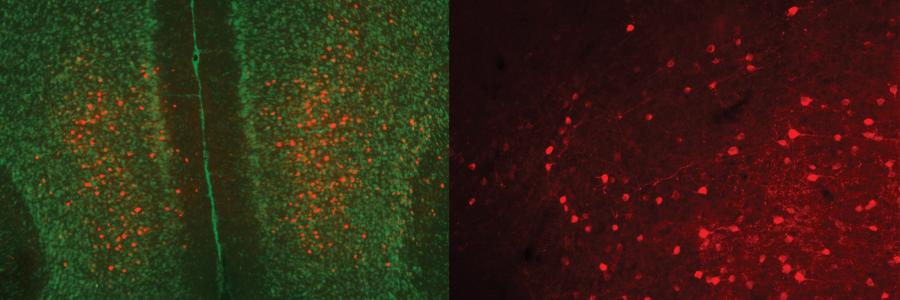
A study performed by PhD students Mariana Matos and Esther Visser in the team of Michel van den Oever reveals that expression of a remote fear memory depends on a small ensemble of neurons in the medial prefrontal that functions as an enduring physical memory trace, or engram.
To determine this, they first developed a method (viral-TRAP) to express a permanent molecular tag in neurons of the medial prefrontal cortex (mPFC) that are activated during fear conditioning. By combining this technique with chemogenetics, they found that a small fraction (~7%) of mPFC neurons becomes activated during conditioning and activity of these specific neurons is subsequently required for memory retrieval one month later. Interestingly, chemogenetic stimulation of these mPFC engram cells was sufficient to artificially evoke memory expression. Furthermore, gene expression regulated by the transcription factor ‘CREB’ appeared critical for consolidation of the fear memory, as selective repression of CREB function in the learning-activated mPFC neurons impaired expression of remote fear memory. Moreover, they also show that involvement of the learning-activated mPFC neurons depended on the strength of fear conditioning. After strong conditioning, activated mPFC neurons are not required, nor participating, in expression of remote fear memory, potentially pointing to a loss of top-down control by the mPFC after a severely aversive experience. Together, these findings provide important fundamental insights in the neurobiological mechanisms that underlie long-term storage and retrieval of fear memories. This study was funded by a ZonMw TOP grant and NWO Vidi grant. Read the original article here.
Read more about the Memory Circuits team